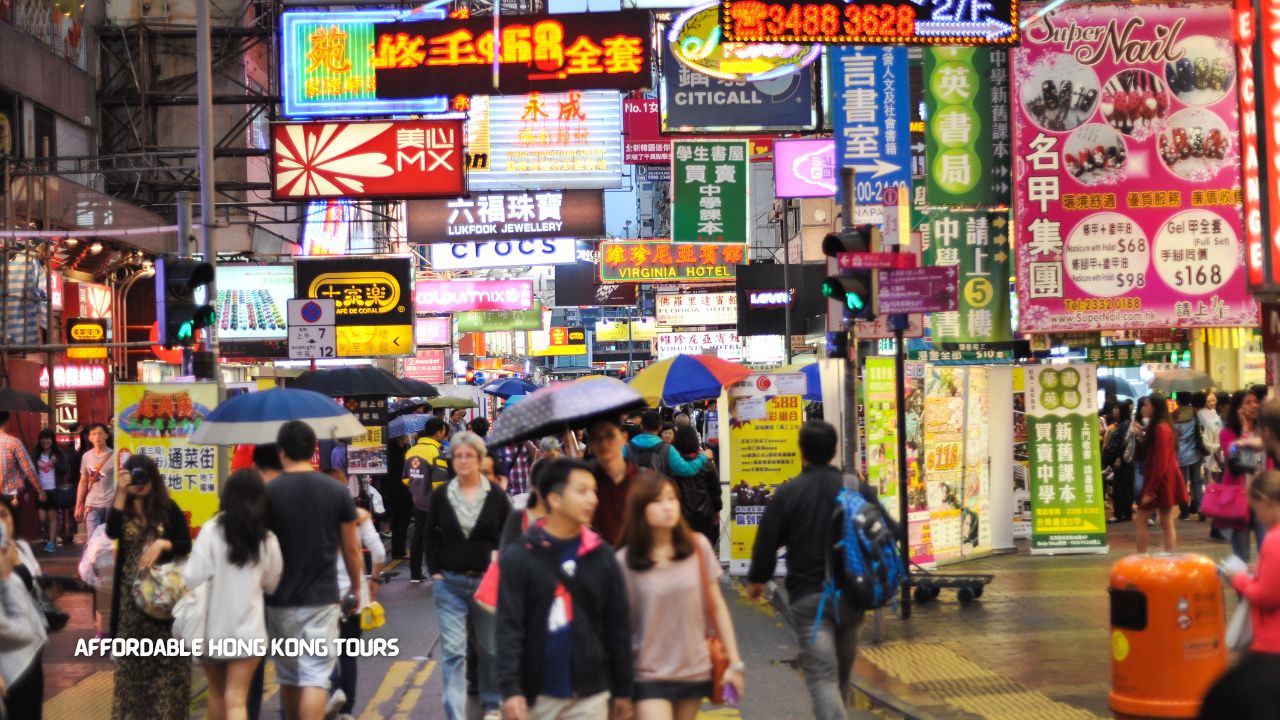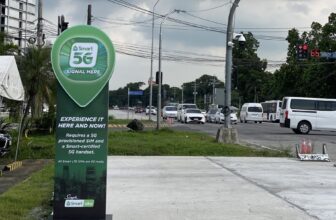Filipinos find domestic travel more expensive than in neighboring countries, and here’s why!
Filipinos have always shown great interest in local travel. Be it exploring under the sea, high up the mountains, or touring cultural heritage sites, strong domestic tourism is still a trend, thanks to the Philippines’ diverse natural attractions.

However, despite this enthusiasm for local travel, seasoned travelers would know that traveling within the Philippines can sometimes be more costly compared to visiting neighboring Asian countries. Just look at local airlines’ piso fare sales– you might notice that flying to Thailand or Vietnam can be less expensive than visiting other islands within our country. Of course, there are many factors attributing to this phenomenon such as the archipelagic state of the country. We also know there is a complex interplay of economic elements that play a significant role in the tourism sector such as transportation, accommodation, and activity expenses. But, where do we go from here?
The rise in domestic travel expenses has prompted travellers to investigate the reasons for these growing costs. Sure, seeing crystal-clear beaches and the beauty of well-preserved historical sites are definitely priceless. But in the grand scheme of things, travel is more than just the attractions. Sooner or later, these factors influencing pricing structures will surely affect the way people decide where to travel. It’s high time to have a conversation about how the Philippine tourism industry tackles cost-efficiency while at the same time making local travel accessible and affordable to the average Filipino.
Factors Influencing Travel Costs
Let’s do a deep dive into how travel costs are influenced by domestic policies and regional economic dynamics.
High demand
The level of demand plays a significant role in determining travel costs. When more people want to travel to one destination at the same time, especially during holidays, long weekend breaks, or the summer season, airline, transportation, car rental services, travel providers or tour operators may increase the price to capitalize on that high demand.
Geographic Layout
The archipelagic nature of the Philippines is another huge factor in travel costs. This is due to distance, accessibility, local economic conditions, and other important factors that people need to note before traveling. Some destinations require travel by sea or air, which typically drives prices up. For example, the islands of Palawan and Boracay. There are cheaper transportation options like Roll-on Roll-off vessels but it takes a while to reach the desired destinations due to several port stops to maximize the route.
Taxation
The government normally imposes taxes and fees to travelers such as airport departure tax, fuel surcharge, and security fees – and not only that– there are other taxes on purchased goods and services, hotel fees, carbon and environmental fees which significantly add cost to the whole travel experience.
Infrastructure Spending
Infrastructure spending has a direct and indirect influence on travel costs in the Philippines. It’s seen in investments in transportation infrastructure, and the rising number of tourism-related businesses like accommodation and services in the area. Most potential investors were discouraged to build new hotel or resort property due to lack of infrastructure in the area.
Transportation costs
Aside from the vacation and activities itself, a huge chunk of travelers’ money goes to transportation costs, especially if they’re traveling long distances by sea or by air. It also depends on the mode of transportation to use– is it accessible by train or by bus, or is renting a tricycle the only option? Transportation fares largely contribute to travel costs, especially that it varies depending on the season too.
Transportation costs are intricately linked to infrastructure, with insufficient roads and public transport systems, resulting in higher fares. For example, a report by ResearchGate highlighted the systemic underfunding in national road-based public transport, which contributes to a public transport shortage and higher costs for passengers. Additionally, a statement by the National Economic Development Authority (NEDA) noted cost reductions in transportation over the years, with transportation expenses in Metro Manila projected to drop from P3.5 billion per day in 2017 to P2.13 billion by 2022 due to the expected completion of infrastructure projects.
Digital Savvy Filipinos and Online Booking Trends
The advent of technology has reshaped the Filipino travel landscape, with digital platforms and travel apps taking center stage in influencing travel expenses within the Philippines. Filipinos have become increasingly digital-savvy, turning to online booking as their primary method of arranging travel. The proliferation of smartphones has only accelerated this trend, with many travelers using their devices to manage travel itineraries. The convenience offered by online platforms, combined with the ability to compare costs and read reviews, greatly influences Filipino travelers’ booking behaviors. However, this shift towards digitalization also brings light to price disparities between domestic and international travel options available on these websites and apps.
Rise of Travel Apps and Their Pricing Strategies
Travel apps like Klook, KKday, Traveloka, and many others have gained prominence in the Philippines, transforming the way Filipinos plan and book their travels. These platforms offer a diverse range of services, from transportation to activities, and their pricing strategies often rely on dynamic pricing models. Factors such as demand, seasonality, and exclusive deals play a significant role in shaping the cost of travel for users.
Travel Habits per Demographic
Young adults, often considered the most digitally savvy group, are accelerating tourism growth in the Philippines. They frequently opt for digital platforms to book and research travel destinations. Data suggests a significant percentage of these travelers express a willingness to travel domestically, with regions like the National Capital Region and Central Luzon being popular choices, illustrating a preference for nearby, accessible getaways.
Families’ travel decisions are influenced by budgets and the availability of family-friendly accommodations. Post-pandemic travel restrictions have shaped the already cost-conscious Filipino traveler to consider affordability even more in their travel choices.
Elderly demographics, who may be less inclined to use digital booking platforms, show varied travel habits, typically seeking traditional travel agencies and value-driven packages. Their travel frequency and destination choices might be less influenced by digital trends but more by historical preferences and personal network recommendations.

Filipinos’ Travel Preferences and Industry Response
Changing travel preferences among Filipinos have prompted the tourism sector to adjust its offerings. Industry surveys suggest that many respondents seek personalized itineraries that cater to individual tastes. In response, operators are curating packages that emphasize the uniqueness of a locale, often at a higher cost, to meet this demand for tailored experiences. Simultaneously, the industry gauges a balancing act between international allure and the charm of domestic tourism. While international travel still holds appeal, a significant portion of Filipinos find exploring local destinations a compelling alternative, especially when considering ease of booking and familiarity with travel guidelines during the pandemic recovery phase.
Aside from economic factors, it’s worth noting how online trends work in deciding a place to travel. Recently, there have been discussions online as local tourism faces scrutiny as it’s more expensive to travel in the Philippines compared to other Southeast Asian destinations. This is because economic factors that influence these costs are manifold, including domestic policies and regional economic dynamics. In contrast, travel expenses in neighboring countries of Southeast Asia, particularly for cities with significant infrastructure investments and efficient public transport systems, may be lower. Factors such as budget allocation and economic strategies play a crucial role.
The Impact of Philippine Economic Policy on Tourism
Economic policies in the Philippines have a direct impact on the tourism industry. The Philippine government has undertaken initiatives to boost tourism, but balancing the budget constraints with the need to provide competitive pricing remains a challenge. Economic policies that streamline costs without compromising the quality of the tourist experience are essential to sway budget-conscious travelers looking for alternatives to more expensive Philippine destinations.
In the Philippines, domestic destinations are served by a variety of transportation modes, such as buses, ferries, and airlines, which can vary widely in terms of quality and availability. The Transport & Infrastructure report by the Oxford Business Group suggests that the pandemic has had a substantial impact on the infrastructure projects, delaying improvements that could enhance the quality of domestic travel options. Local bus and ferry services often suffer due to their proximity to major cities and touristic spots, leading to congestion and extended travel durations.

The Lure of Nearby Asian Countries as Travel Alternatives
Filipinos are discovering that when it comes to tourism, venturing to international destinations in Asia can often be more economical than domestic travels. Highlighting the affordability and allure of countries like Singapore, Hong Kong, and Thailand, this exploration will delve into the comparative advantages these regions boast over local destinations.
Singapore and Hong Kong have emerged as top travel alternatives for Filipinos due to their unique combination of urban sophistication, safety, and expansive dining and shopping options. These destinations offer highly developed infrastructure, making tourism convenient and appealing. Moreover, these countries frequently offer promotions that substantially lower travel costs, allowing vacationers to stretch their budgets further.
In Southeast Asia, countries like Thailand, Bali, and Taiwan are attracting travelers with their rich cultural heritage paired with well-developed tourism facilities. Travelers find that low-cost carriers offer regular seat sales that greatly reduce airfare costs. Furthermore, less stringent travel restrictions in these countries contribute to their accessibility, making them attractive international prospects for exploration. Additionally, the thriving street food scenes in places like Bangkok present a culinary adventure at a fraction of the cost one might incur dining out in the Philippines.
Malaysia, Singapore, Taiwan, and other Asean countries offer airport-to-city connectivity with their efficient train system. Railways often offer cheaper transportation options, contributing to more travel savings for budget-conscious travelers.
Flights in the Philippines are often pricier than those in its Southeast Asian neighbors, leaving me curious about the reasons behind this trend. While traveling through different cities in Indonesia, it dawned on me that various factors may contribute to the higher flight costs. These could include fuel-related expenses, government taxes, airport facility charges, and other operational costs. Factors such as flight frequency and aircraft types may also play a role in determining ticket prices. Interestingly, I observed that destinations in the Philippines with more flight frequency and longer runways tend to offer more competitive pricing for travelers.
Cultural and Recreational Comparative Advantages
Many Filipinos are drawn to Japan’s blend of traditional experiences and modern theme parks, which deliver a diverse range of recreational activities. The country’s efficient public transportation system makes navigating between cities and attractions easier. While it might not be the cheapest destination in the region, travelers are finding that the cultural enrichment and pristine safety record justify the costs.
Bali and Thailand offer a tropical experience akin to Philippine beaches but are increasingly perceived as more affordable due to competitive accommodation rates and inexpensive everyday expenses. With a focus on wellness and spirituality, these destinations present a different set of recreational options compared to domestic travel destinations in the Philippines, attracting those looking for serene and rejuvenating getaways.
Accessibility to these Southeast Asian destinations has improved, with most carrying minimal entry restrictions and offering a sense of familiarity with food and culture to Filipino travelers. As a result, Filipinos are enticed to discover these international travel spots that promise a blend of affordability, safety, and novel experiences.
Influence of Filipino Travel Mindset on Cost Perception
Filipinos’ perception of travel costs is deeply ingrained in their mindset. Cost and value analysis is a significant factor driving the travel decisions of outbound travelers from the Philippines. Michelle Ho, an industry expert, emphasizes that even as travel becomes more accessible, the perceived value of a trip goes beyond mere pricing—it includes the overall experience and satisfaction derived from the journey.
Factors such as convenience, quality of experience, safety, and the degree of relaxation achievable are weighed heavily. For instance, despite the record-breaking numbers of domestic trips, there remains a prevalent belief among Filipinos that international travel to some neighboring ASEAN countries might offer better value due to competitive pricing and a different set of experiences against a backdrop of similar or even lower costs.
In a nutshell, it is high time that Philippine tourism be improved in all factors, to be at par with neighboring Asian countries. By focusing on infrastructure and transportation improvements, we can make our tourist spots more accessible to many people. Aside from tourism promotions, it’s only fitting to put importance to how people can access these destinations and have a worthwhile experience without having to spend too much. After all, a well-deserved vacation should be stress-free and as affordable as possible!
Follow and Subscribe to OutofTownBlog.com on Facebook, Twitter, Instagram, and Pinterest, and Team Out Of Town on YouTube for Philippine Tourist Attractions.
Read: Projects Expected to Improve Metro Manila’s Transport Infrastructure






